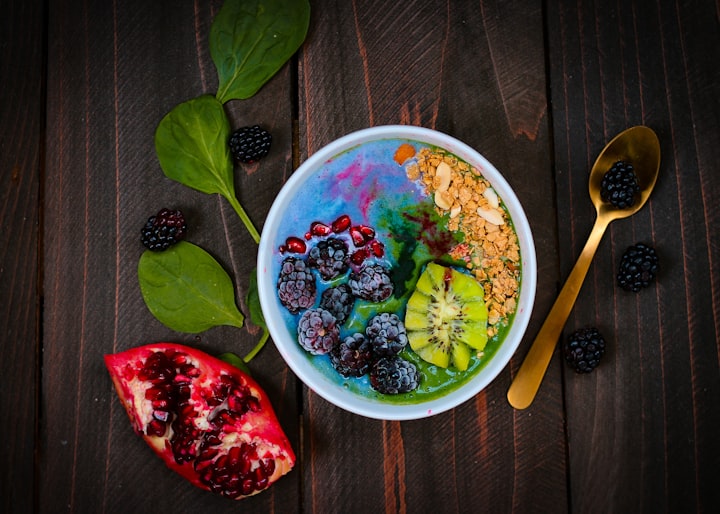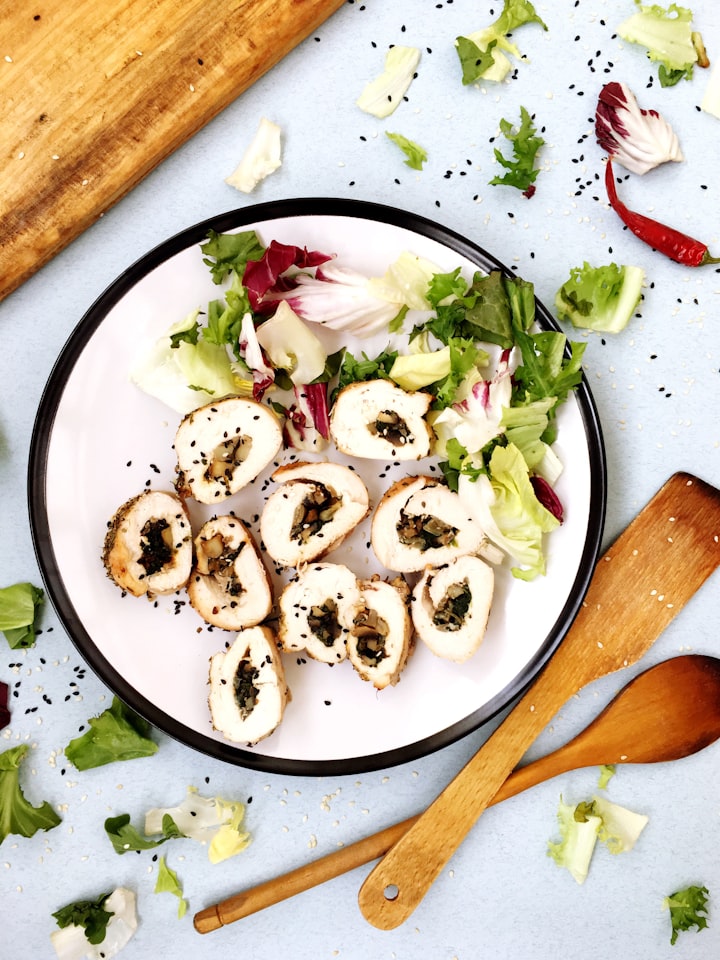The Top 5 Keto Meal Plans for Beginners
Read this Article to Learn More

Are you just starting out on the keto diet and looking for a meal plan that can help you get started? If so, you’ve come to the right place! In this blog post, we’ll be discussing the top 5 keto meal plans for beginners, as well as tips for creating a successful meal plan and staying on track with the keto diet. Read on to learn more about keto meal plans and how to pick the right one for you.
1) The Atkins Diet
The Atkins Diet is a popular low-carbohydrate diet that has been used by millions of people since its creation in the 1970s. The diet focuses on controlling the intake of carbohydrates, which helps to reduce overall calorie intake and encourages the body to burn stored fat for energy. This can lead to weight loss in some people.
The Atkins Diet plan is divided into four phases: induction, ongoing weight loss, pre-maintenance and lifetime maintenance. During the induction phase, you'll limit your carb intake to 20g per day for two weeks and gradually increase it as you lose weight. During ongoing weight loss, you'll follow a modified version of the induction phase until you reach your target weight.
During pre-maintenance, you'll slowly reintroduce carbs into your diet, but still limit them to a certain amount. Finally, during lifetime maintenance, you'll continue to watch your carb intake, but can enjoy some high-carb foods in moderation.
The Atkins Diet emphasizes protein-rich foods such as lean meats, fish and eggs, as well as leafy green vegetables, nuts, seeds and dairy products that are low in sugar and fat. It also encourages an active lifestyle with regular physical activity and adequate sleep.
Overall, the Atkins Diet is a popular and effective weight loss plan that has helped many people achieve their weight loss goals. If you're looking to lose weight and reduce your carb intake, the Atkins Diet may be a good choice for you.
2) The South Beach Diet
The South Beach Diet is a popular weight loss plan that was developed by cardiologist Dr. Arthur Agatston in the early 2000s. It is based on the principle of replacing unhealthy fats and carbohydrates with healthy ones. It emphasizes the importance of eating lean proteins, vegetables, legumes, and whole grains. This diet also encourages limiting sugar and simple carbohydrates such as white bread, pasta, and sweets.
The South Beach Diet consists of three phases: the first two are considered the most restrictive and are meant to kick-start weight loss. During this period, participants are encouraged to limit their intake of processed foods and sugar, while eating more lean proteins, vegetables, whole grains, nuts, and seeds.
In the first phase of the diet, which typically lasts two weeks, participants are asked to eliminate all starchy carbohydrates, including potatoes, rice, and grains. This is designed to help participants jump-start their weight loss efforts. In the second phase of the diet, participants are allowed to slowly reintroduce these foods in moderate amounts.
In the third phase, which is a maintenance phase, participants are free to eat whatever they want as long as it fits within their personal health and fitness goals. This phase is designed to help participants find a lifestyle that is sustainable for long-term health and weight management.
Overall, the South Beach Diet encourages eating a balanced and healthy diet that focuses on replacing unhealthy fats and carbs with healthier alternatives. It is also low in added sugars and encourages the consumption of lean proteins, vegetables, legumes, and whole grains. This diet can be beneficial for those looking to lose weight or maintain a healthy lifestyle.
3) The Paleo Diet
The Paleo Diet, also known as the caveman diet, is based on the idea of eating like our ancestors did thousands of years ago. It consists of only whole foods such as lean meats, eggs, fruits, vegetables, nuts, and seeds. This type of eating emphasizes unprocessed, nutrient-dense foods and eliminates processed foods, added sugars, refined carbohydrates, dairy products, legumes, and grains.
The goal of the Paleo Diet is to eat in a way that mimics what our Paleolithic ancestors ate. This means that the emphasis is on unrefined foods that are high in fiber, antioxidants, vitamins and minerals. The Paleo Diet is focused on providing the nutrients needed to improve health and reduce the risk of chronic diseases such as heart disease and diabetes.
One advantage of the Paleo Diet is that it encourages people to eat nutrient-dense whole foods which are essential for good health. The emphasis on fresh fruits and vegetables is particularly beneficial as these foods are high in vitamins, minerals and antioxidants. Additionally, the elimination of processed foods is beneficial as they are typically low in nutritional value and may contain unhealthy additives.
On the other hand, there are some drawbacks to following a Paleo Diet. For one, it may be difficult to follow due to its restrictive nature. Additionally, because it eliminates entire food groups such as dairy and legumes, it may be difficult to get all the necessary nutrients for good health. Finally, since the focus is on animal proteins, it may be difficult for vegetarians and vegans to follow this diet.
In conclusion, the Paleo Diet is an effective way to improve health by focusing on nutrient-dense whole foods while eliminating processed foods. However, it is important to understand that there may be some drawbacks to following this diet due to its restrictive nature and lack of certain nutrients. Ultimately, it is up to each individual to decide whether this diet is right for them.
4) The Ketogenic Diet
The Ketogenic Diet is a high-fat, moderate-protein, and low-carbohydrate diet. It was originally developed in the 1920s to treat epilepsy in children. The diet works by drastically reducing carbohydrate intake and replacing it with fat. This causes your body to enter a metabolic state called ketosis, where it becomes incredibly efficient at burning fat for energy.
Keto is one of the most popular diet plans today due to its effectiveness in helping people reach their weight loss goals. Studies have shown that the diet can lead to improved cholesterol levels, decreased risk of heart disease, and even reversed type 2 diabetes.
When following the keto diet, you’ll focus on eating foods high in healthy fats, moderate amounts of protein, and very few carbohydrates. Foods like fatty fish, avocados, nuts, seeds, eggs, and leafy greens are all great sources of healthy fats and should be included in your meals. Protein should come from lean sources like poultry, beef, pork, and eggs. And carbohydrates should come primarily from non-starchy vegetables like broccoli, spinach, and kale.
If you’re just starting out on the keto diet, it’s important to plan out your meals and snacks ahead of time. That way you can make sure you’re getting the right nutrients and enough calories. You can also check out online meal plans or create your own based on the keto food list. With a little bit of planning and preparation, you can easily succeed on the ketogenic diet.
5) The Dukan Diet
The Dukan Diet is a low-carbohydrate, high-protein diet developed by Dr. Pierre Dukan in the 1970s and popularized by celebrities like Kate Middleton. The diet focuses on lean protein sources, such as poultry, fish, eggs, and legumes, with a few servings of fruit and vegetables. There are four phases to the diet: Attack, Cruise, Consolidation, and Stabilization.
The Attack phase is designed to kickstart weight loss with rapid and strict restrictions on carbohydrates. During this phase, you are allowed to eat unlimited lean proteins, two to three tablespoons of oat bran each day, and one serving of fruit or vegetable a day. The goal of the Attack phase is to jump-start your metabolism and initiate fat burning.
The Cruise phase begins when you’ve lost about 10% of your initial weight. This phase includes adding more vegetables to your diet and alternating five days of pure protein with five days of alternating protein and vegetables. The goal of this phase is to continue fat burning while introducing more variety into your diet.
The Consolidation phase reintroduces more food groups, such as starchy carbs, to help prevent weight regain. The goal of this phase is to transition back to a normal diet while maintaining the new weight that you have achieved.
Finally, the Stabilization phase is the maintenance phase which lasts for the rest of your life. During this phase, you can eat whatever you want as long as you stick to three main rules: eating unlimited amounts of lean protein, eating oat bran every day, and taking the stairs instead of the elevator at least once a day.
Overall, the Dukan Diet is a popular option for those looking to lose weight quickly and effectively. While there are many dietary restrictions during the Attack and Cruise phases, the Consolidation and Stabilization phases allow for more flexibility and make it easier to stick to the diet long-term.
If you want to learn my #1 way to master the keto diet click here now





Comments
There are no comments for this story
Be the first to respond and start the conversation.